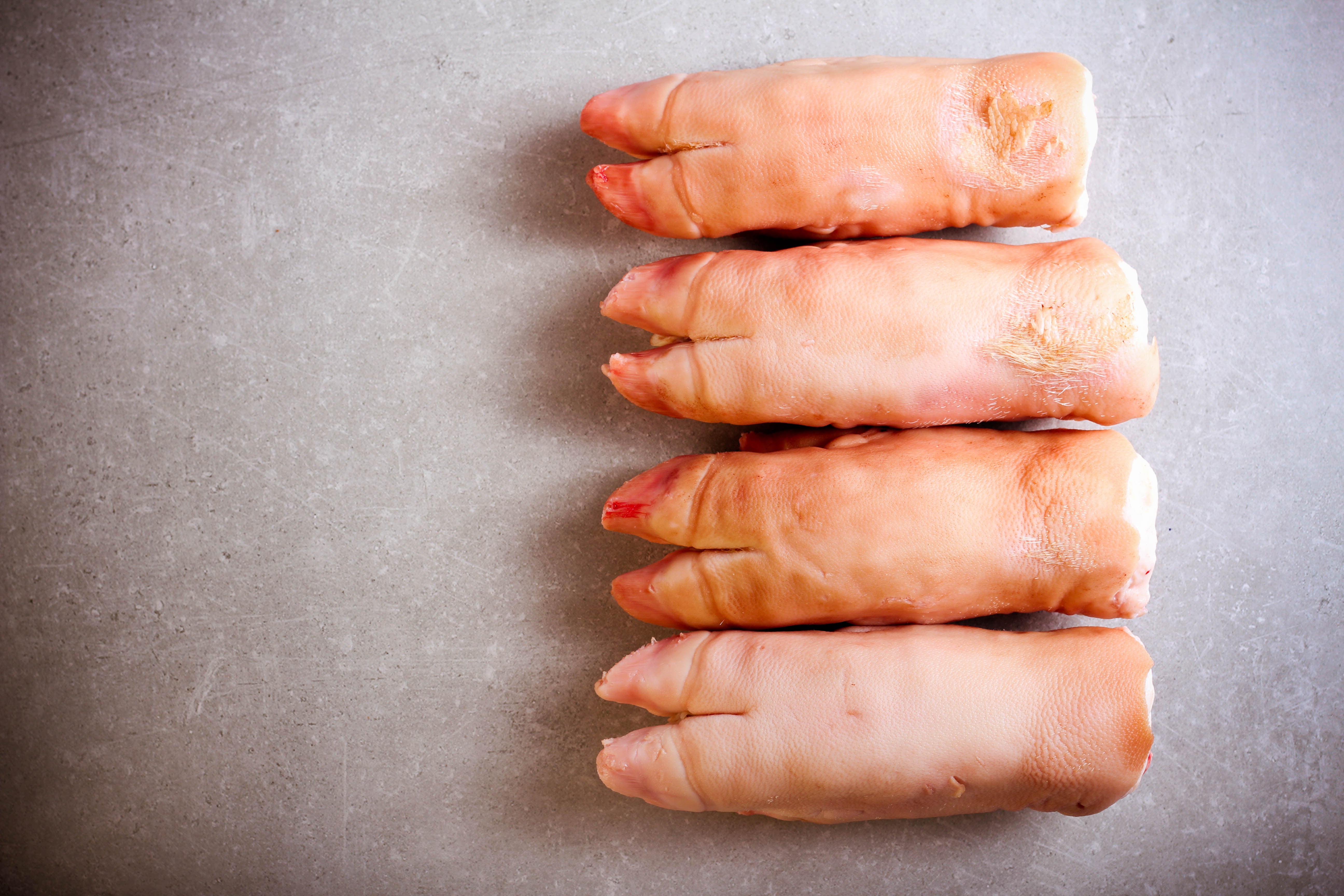

To learn more about our RealSuture 6-Layer Suture Pad click here.
Medical schools often rely on pigs' feet to introduce students to incision and suture practice. The tissue on pigs' feet is relatively similar to human skin — as it has epidermis and subcutaneous layers — and it’s a relatively cheap option when purchasing en masse. However, while using pigs' feet for suture training may be a long-standing practice, it’s not the best or most effective option for practicing suture techniques.
Pigs' feet are not necessarily even the best option when it comes to practicing sutures on non-synthetic tissue. A small study performed by researchers at the University of Kentucky College of Medicine in 2013* found that both students and instructors reported higher levels of efficacy when practicing sutures on banana peels over pigs' feet. Students reported that they perceived the quality and efficacy of their work as being better when practicing on the banana peels. Their instructors also rated the students higher on their suture placement in the banana peels, though slightly better for tying on pigs' feet.
While both banana peels and pigs' feet may seem like inexpensive and effective options, suture pads offer several huge advantages over both.
Portability
Unless students are living with particularly forgiving roommates, it’s not really viable for them to keep pigs' feet in their freezer or refrigerator at home. As a result, their suture practice is entirely limited to a lab setting. More often than not, this means that students get paired with a lab partner, share a pigs' foot or two, and each get to practice just a few dozen stitches.
In contrast, suture pads (and suture training kits) are portable, odor-free and accessible outside of the classroom. This provides students with the opportunity to practice hundreds of sutures without wasting faculty prep or clean up time. It’s also a great option for teaching in virtual settings. Students can practice on suture pads at home and send videos and images to instructors for feedback.
Reusability
When practicing sutures on pigs' feet, one of the major problems is that you can only use each foot once. There is a limited surface area on which to practice, and once the stitches are placed, students can’t reuse the same foot for further attempts. On average, a student can place around 30 sutures per foot.
Because suture pads are reusable, students can practice placing vastly more stitches on the same practice surface. As a result, the ultimate cost-per-suture is significantly lower, even if the up-front cost seems higher.
More Lifelike
The reality is that when students are practicing sutures on pigs' feet, they are practicing on dead tissue. It may be similar to human skin, but it’s a sub-par option for understanding how to stitch through the multiple layers of skin. Pigs' feet also don’t provide the opportunity to practice deep incisions, burying sutures or two level closure.
Suture pads, in contrast, provide much a more life-like surface for suture practice. Each layer of a suture pad is designed to mimic the real-life layer of tissue. This allows students to see and feel the differences between the layers.
Importantly, suture pads are also available in different skin tones. This provides students with the opportunity to practice in a more realistic manner.
Cost Efficiency
While both pigs' feet and banana peels seem like cheap options given the low up-front costs, the reality is that the cost-per-suture is better with a suture pad. Because students can place hundreds of sutures on a single pad, the ultimate cost-per-suture on a $30 pad is actually less than using a $2 pigs' foot. That’s not even factoring in the cost of ice and protective gear for practicing on pigs' feet in a lab setting.

Given the necessity for refrigeration, the bad smell and their generally cumbersome nature, pigs' feet are an inefficient tool for suture practice. Banana peels might be a more easily accessible option, but they have significant drawbacks in terms of realism.
Suture pads are more portable, more accessible, more lifelike and more cost effective. Additionally, a suture practice kit also includes all the necessary tools for a student to practice outside of a lab. The more practice they can get, the more confident and competent students will be before they have to suture live tissue for the first time.
To learn more about our RealSuture 6-Layer Suture Pad click here.
- *Singhal, S. McCafferty, L. Adkins, B. Stearely, S. Doty, C. “Use of Banana Peels as an Alternative Model for Suturing Education.” Annals of Emergency Medicine - vol 62, no 5, November 2013.
